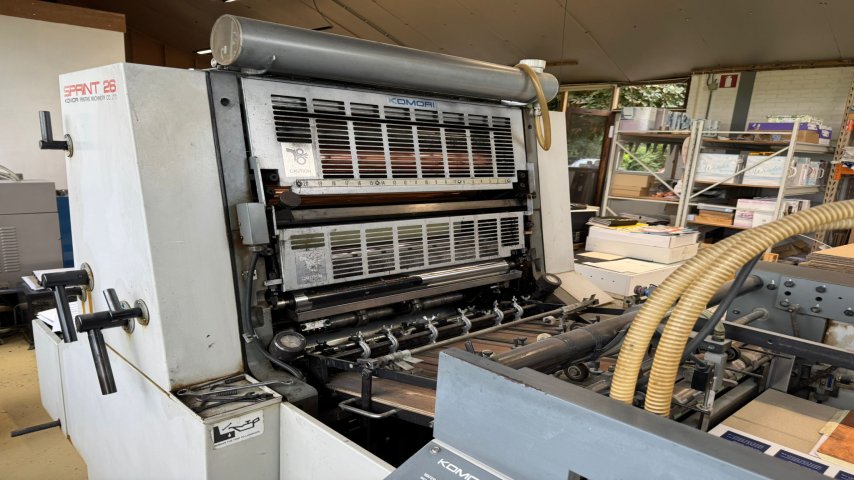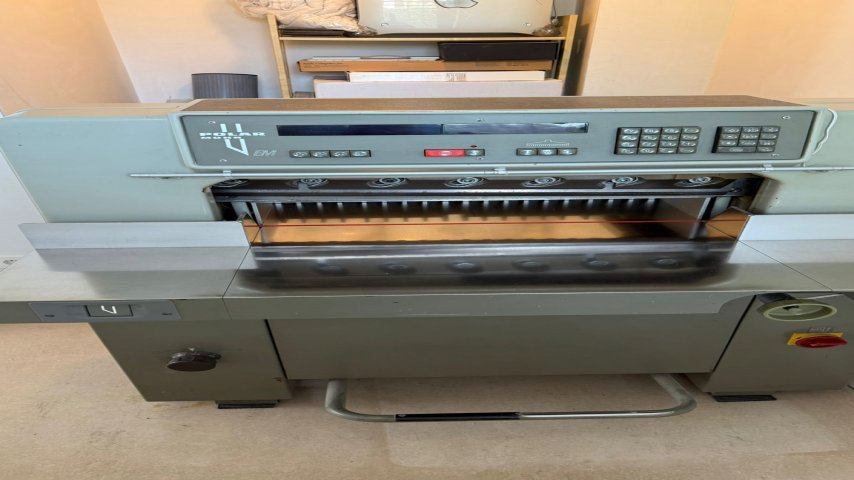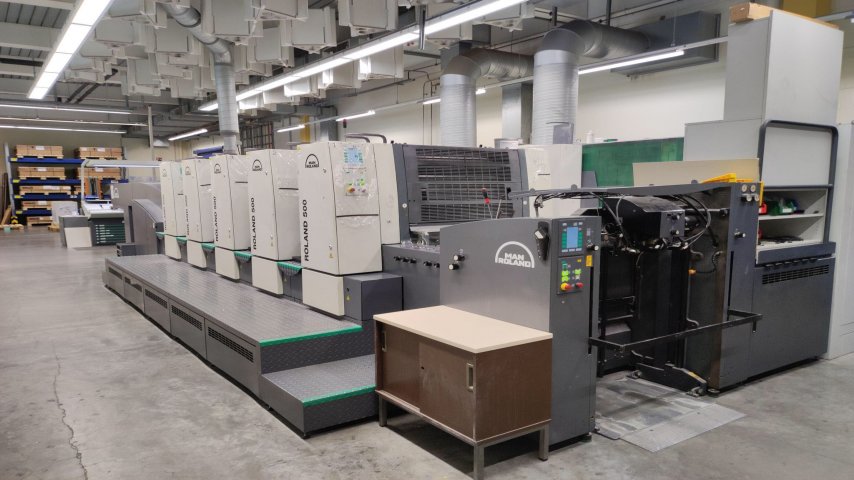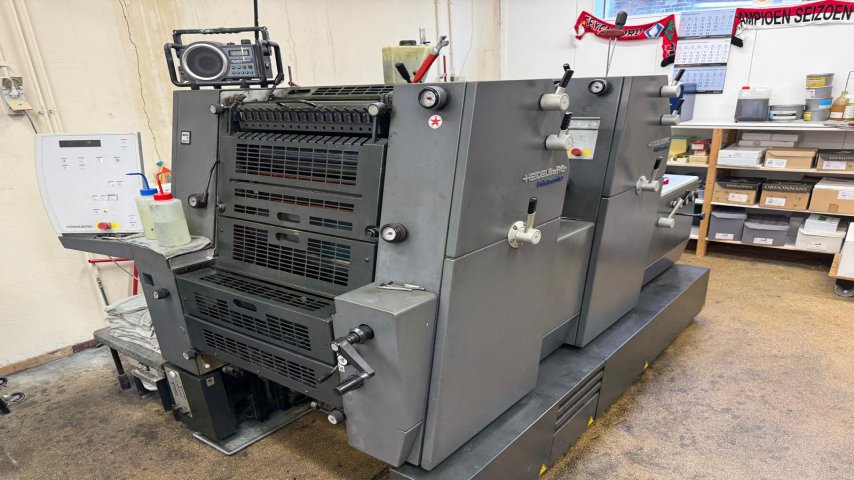- Home
-
Machinery List
Machinery List (148) Stocklist (144) Sheet Offset (23) Converting (109)All Guillotine (16)Folding Machine (18)Perfect Binding (6)Saddle Stitching (4)Gathering (4)Miscellaneous (60)Cross Feeder (1)Web Offset (1) Paper Converting (4) Solid Board Converting (2) Corrugated Board Conv. (2) Preamplifiers (4) Accessory (3)
- Sell machine
- Service
- Contact
Blog - Stay informed
CPC 1.04 (Central Press Control system)
The CPC 1.04 system, introduced by Heidelberg in 1986, marked a significant advancement in the automation of offset printing presses. Building upon its predecessors, the CPC 1.04 integrated deeper connectivity with prepress data, enhancing the efficiency and precision of print production.
Date: 2025-02-09 • Author: Ahmet Karakus
CPC 1.03 (Central Press Control system)
In offset printing, achieving consistent and high-quality results requires precise control over various parameters, including ink distribution, register alignment, and dampening. The CPC 1.03 system, introduced by Heidelberg in the mid-1980s, significantly advanced these capabilities, offering enhanced automation and integration for printing presses.
Date: 2025-02-05 • Author: Ahmet Karakus
Blade
In offset printing presses, achieving precise ink application and consistent print quality is paramount. A critical component in this process is the use of doctor blades, which play a vital role in controlling the ink metering system.
Date: 2025-02-01 • Author: Ahmet Karakus
Bacher punch (Register punch system)
In offset printing, achieving precise alignment between the printing plates and the press cylinders is essential for consistent print quality. A critical component in this process is the register punch system, which ensures that plates are accurately positioned and secured on the press.
Date: 2025-01-28 • Author: Ahmet Karakus
Autoplate (Automatic Plate Changer)
In modern offset printing, minimizing downtime during job changes is crucial for maintaining high productivity and efficiency. A significant advancement in this area is the development of automatic plate changing systems, which streamline the process of replacing printing plates between jobs. These systems automate the traditionally manual task of plate changing, reducing the time and labor involved and allowing operators to focus on other essential tasks.
Date: 2025-01-24 • Author: Ahmet Karakus
AMRYS – Automatic Make-Ready System
In the realm of print finishing, particularly in saddle stitching, the efficiency and speed of job changeovers are paramount. Traditionally, these transitions involved manual adjustments, consuming significant time and resources. However, advancements in automation have introduced systems that drastically reduce setup times, enhancing productivity and responsiveness.
Date: 2025-01-20 • Author: Ahmet Karakus
Alphatronic 200
In modern offset printing, achieving consistent and high-quality results requires meticulous control over various factors, one of which is the prevention of set-off. Set-off occurs when freshly printed sheets come into contact with each other before the ink has dried, leading to unwanted transfer of ink from one sheet to another. To mitigate this issue, advanced printing systems employ automated powder application techniques.
Date: 2025-01-16 • Author: Ahmet Karakus
ALCOLOR film dampening system
In offset printing, maintaining a stable ink-water balance is crucial for achieving consistent print quality. An essential component in this process is the dampening system, which applies a thin layer of dampening solution to the printing plate to prevent unwanted ink adhesion on non-image areas. A well-designed dampening system ensures uniform ink distribution, reduces drying times, and enhances overall print reliability.
Date: 2025-01-12 • Author: Ahmet Karakus
Air table
In modern printing operations, efficient handling of printed sheets is crucial to maintaining workflow and ensuring high-quality output. One essential feature that facilitates this is the incorporation of an air-assisted lifting mechanism. This system significantly enhances the handling process, especially when dealing with large-format sheets.
Date: 2025-01-08 • Author: Ahmet Karakus
Powder spray
In offset printing, ensuring that freshly printed sheets do not adhere to one another is crucial to maintaining print quality and operational efficiency. This challenge arises because ink on newly printed sheets remains wet and can easily transfer to adjacent sheets, leading to issues such as smearing, set-off, and blocking. To mitigate these problems, a specialized technique is employed to create a barrier between sheets, allowing the ink to dry naturally and preventing unintended transfer.
Date: 2025-01-04 • Author: Ahmet Karakus
Graphische Okkasionen Karakus
Our work consists of the international trade with graphic machines and equipments. Good contacts and over 25 years of experience assure our position on the international market.We distinguish ourselves through serious and uncomplicated handling. Our Monteure are guarantors for satisfied clients.
Imprint
Disclaimer
Blog
Manufacturer information
Specials Machinery
Contact
D-41849 Wassenberg
Tel: +49 - (0) 2432-98 595-0
Fax: +49 - (0) 2432-98 595-29
Email: info@gok-karakus.de







